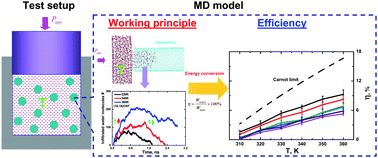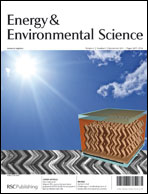A conceptual thermal actuation system driven by interface tension of nanofluids
Abstract
In a system containing nanoporous materials and liquids, the well-known thermo-capillary effect can be amplified by the ultralarge specific surface area of the nanopores. With appropriate temperature change, the relative wetting–dewetting transition can cause the liquid to flow in or out of the nanopores, and part of the thermal energy is converted to significant mechanical output. A conceptual design of such a thermal actuation/energy conversion/storage system is investigated in this paper, whose working mechanism, i.e. the thermally dependent


 Please wait while we load your content...
Please wait while we load your content...